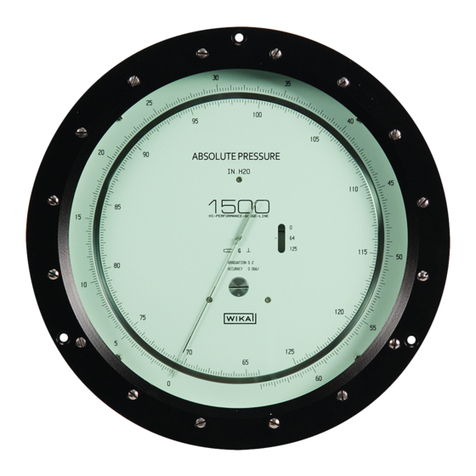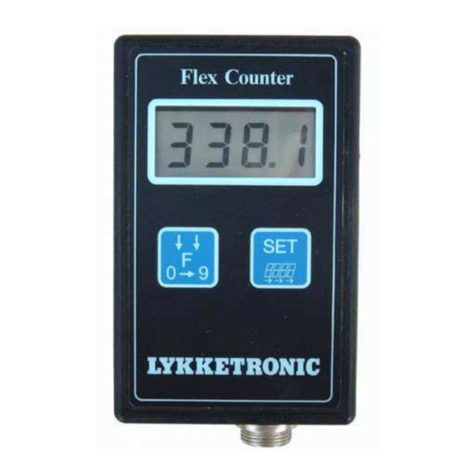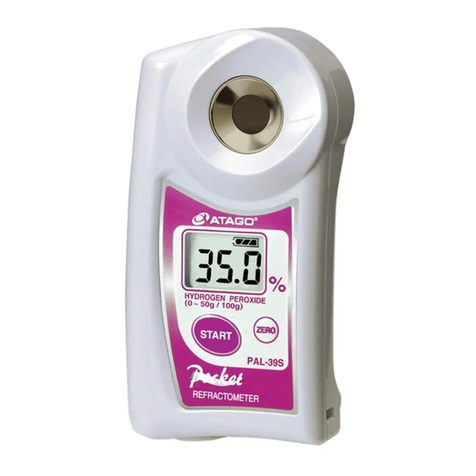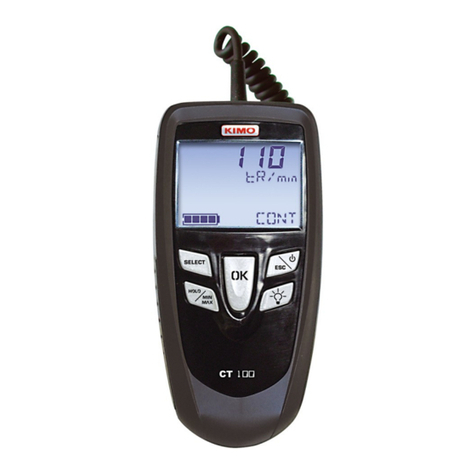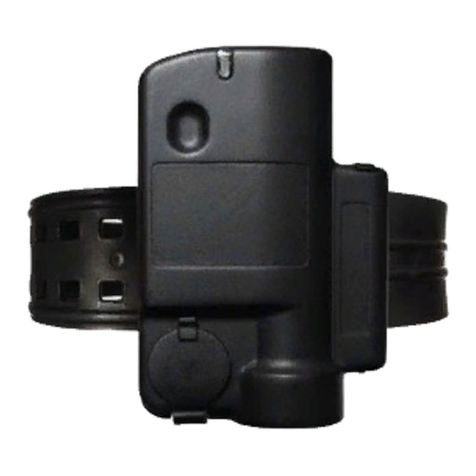Brain Bee AGS 200 User manual

ENGLISH 1 / 1 CHAP. 1 – GENERAL INFORMATIONS
ags-200
CHAP. 1 - GENERAL INFORMATION
Every care was taken when the information in this manual was compiled and checked.
However, despite these efforts, this publication may contain inaccuracies or printing
errors. Neither BRAIN BEEnor any other person or company that helped to create,
produce and distribute the product shall be liable for any damages deriving from use of
this documentation.
BRAIN BEEreserves the right to improve or modify its products at any moment
without prior notice.
This manual may contain references to or information about BRAIN BEEproducts or
services that are not yet available on the market. These references or information in no
way mean that BRAIN BEEintends to place such products or services on the market.
This publication may neither be partly nor wholly duplicated or distributed without prior
authorization from BRAIN BEE(Law N° 663 of 22nd April 1941 and successive
updates). Requests for further copies of this manual or further information should be
addressed to an authorized dealer, a sales representative of BRAIN BEEor to its e-
All technical and sales documentation is also available in the Internet website:
http://www.brainbee.com
BRAIN BEEis a registered trademark owned by BRAIN BEE s.p.a., via Quasimodo 4/A
- 43126 Parma, Italy. Other names of products and companies mentioned in this
manual may be registered trademarks held by their respective owners.
.
References to programs under license for use or to other BRAIN BEE( products or
services mentioned in this publication does not mean that only these programs and/or
products and/or services may be used. Functionally equivalent products, programs or
services can be used instead of those supplied by BRAIN BEEso long as such action
does not violate the intellectual property rights or other rights of BRAIN BEE.The
user is responsible for evaluating and checking whether other programs and/or products
and/or services can be used, with the exception of those explicitly indicated by BRAIN
BEE.
BRAIN BEEmay have patents or applications for patents in progress involving the
matters described in this publication. Supply of this publication does not imply that any
license to these has been granted.

CHAP. 1 – GENERAL INFORMATIONS 2 / 2 ENGLISH
ags-200
Blank page

ENGLISH 3 / 3 CHAP. 2 - INDEX
a
gs-200
CHAP. 2 - INDEX
CHAP. 1 - GENERAL INFORMATION ...........................................................................1
CHAP. 2 - INDEX ............................................................................................................3
CHAP. 3 - SAFETY CONDITIONS..................................................................................5
3.1 IMPORTANT INFORMATION CONCERNING PERSONAL SAFETY...........5
3.2 IMPORTANT INFORMATION ABOUT THE SAFETY OF THE
INSTRUMENT .................................................................................................................8
3.3 GENERAL NOTES ........................................................................................9
3.3.1 INSTALLATION .......................................................................................9
3.3.2 IMPORTANT INFORMATION ABOUT THE BATTERY (BOTH
INTERNAL AND EXTERNAL).................................................................................9
3.3.3 IMPORTANT INFORMATION ABOUT OPERATING SAFETY .............11
3.3.4 WHEN THE INSTRUMENT IS NOT USED ...........................................12
3.3.5 CLEANING ............................................................................................12
3.4 SYMBOLS ...................................................................................................13
3.4.1 SAFETY.................................................................................................13
3.4.2 MARKING ..............................................................................................13
CHAP. 4 - GENERAL DESCRIPTION ..........................................................................15
4.1 EXTERNAL ASPECT OF AGS-200.............................................................15
4.1.1 EXTERNAL ASPECT OF AGS-200.......................................................15
4.1.2 ACCESSORIES.....................................................................................17
CHAP. 5 - GENERAL SPECIFICATIONS.....................................................................19
5.1 GENERAL SPECIFICATIONS.....................................................................19
CHAP. 6 - PRELIMINARY OPERATIONS....................................................................21
6.1 INSTALLATION ...........................................................................................21
6.2 HOW TO INSTALL THE SOFTWARE .........................................................24
6.3 INSTALLATION IN THE DOS ENVIRONMENT ..........................................24
6.4 INSTALLATION IN THE WINDOWS ENVIRONMENT ...................................24
6.5 SETTINGS...................................................................................................24
6.5.1 GARAGE DATA ENTRY........................................................................26
6.5.2 DATE AND TIME SETTING...................................................................27
6.5.3 SERIAL PORT SET-UP.........................................................................28
6.5.4 REVOLUTION COUNTER SET-UP.......................................................29
CHAP. 7 - USE OF THE INSTRUMENT .......................................................................31
7.1 USE OF THE PROGRAM IN A PERSONAL COMPUTER OR IN OMNIBUS
31
7.1.1 GAS READING IN CONTINUOUS MODE.............................................32
7.1.2 GAS VALUE READING IN COMPLIANCE WITH STANDARD CEE
92/55 34
7.1.2.1 VEHICLE DATA ENTRY ...................................................................................................... 34
7.1.2.2 ENVIRONMENTAL TEST CONDITIONS ............................................................................ 35
7.1.2.3 RESIDUE HC TEST ............................................................................................................. 36
7.1.2.4 VEHICLE ENGINE TEMPERATURE TEST......................................................................... 37
7.1.2.5 GAS READING.....................................................................................................................38
7.1.2.6 PRINT-OUT OF RESULTS .................................................................................................. 39
7.1.2.7 EXHAUST LIMITS................................................................................................................ 39
7.1.3 HOW TO CHECK THE CALIBRATION DUE DATE ..............................40
7.1.4 LEAK TEST ...........................................................................................41
7.1.5 RESIDUE HC TEST ..............................................................................42

CHAP. 2 - INDEX 4 / 4 ENGLISH
ags-200
7.1.6 O2 SENSOR EFFICIENCY....................................................................43
7.1.7 SPECIAL TESTS ...................................................................................44
7.1.7.1 CARBURATION TEST......................................................................................................... 45
7.1.7.2 GAS DIAGNOSIS................................................................................................................. 46
7.1.7.3 EFFICIENCY OF THE CATALYTIC UNIT ........................................................................... 47
7.1.7.4 HEAD GASKET TIGHTNESS .............................................................................................. 48
7.1.7.5 ENGINE WARMING-UP EFFICIENCY ................................................................................ 49
CHAP. 8 - MAINTENANCE...........................................................................................51
8.1 9.1 - HOW TO CLEAN THE FILTERING SYSTEM....................................................51
8.2 HOW TO REPLACE THE ACTIVATED CARBON FILTER .........................53
8.3 PERIODICAL INSPECTION OF THE ANALYZER ......................................53
CHAP. 9 - ERRORS......................................................................................................55
CHAP. 10 - OPTIONALS ..............................................................................................57

ENGLISH 5 / 5 CHAP. 3 - SAFETY
a
gs-200
CHAP. 3 - SAFETY CONDITIONS
3.1 IMPORTANT INFORMATION CONCERNING PERSONAL SAFETY
DANGER OF ASPHYXIATION
PETROL (GASOLINE) FUELLED ENGINES
The exhaust gas of petrol (gasoline) fuelled engines contains carbon monoxide, a
colourless and odourless gas which can cause serious physical problems if inhaled.
Pay particular attention if you work in a pit as some exhaust gas components are
heavier than air and will thus deposit at the bottom of the pit itself.
Great care should also be taken with gas fuelled vehicles..
DIESEL ENGINES
The composition of the exhaust gas produced by a Diesel engine is not always the
same. It can change according to: the type of engine, aspiration, the conditions of use
and the composition of the fuel used.
Diesel exhaust consists of (CO, CO2, NOX and HC) gas and particulate (soot,
sulphates).
The tiny particles of carbon that form the soot remain suspended in the air and can
therefore be inhaled. Small amounts of toxic components are also present.
SAFETY MEASURES:
- Always ensure that the place in which you work is correctly ventilated and that any
fumes are exhausted (particularly in pits).
- Always operate the exhaust system in closed rooms..
DANGER OF BEING CRUSHED
You could be crushed against a work bench unless the vehicles are correctly locked in
place by mechanical means.
SAFETY MEASURES:
- Make sure that the vehicle is unable to move by applying the hand brake and locking
the wheels.
- Allow the engine to cool.
- Do not use naked flames or components that produce sparks.
- Do not smoke.

CHAP. 3 - SAFETY 6 / 6 ENGLISH
ags-200
- Clean up any spilt fuel.
- Operate exhaust fans in closed rooms..
RISK OF INJURIES
There are mobile parts in stationary or running engines (belts and so forth) that could
injure the hands and arms.
Amongst the various engine components, pay the greatest attention to electric fans
since they may start operating unexpectedly even when the engine is off.
SAFETY MEASURES:
- Never place your hands near moving parts whilst the engine is on.
- If you must work near electric fans, first allow the engine to cool, then remove the
fan plug from the motor.
- Keep the connection cables of test instruments well away from the moving parts
of the engine.
RISK OF BURNS
Some of the engine components (exhaust gas manifold and so forth) can become very
hot, as can some of the sensors.
Take great care to avoid touching these components.
SAFETY MEASURES:
- Wear protective gloves.
- Allow the engine and any self-contained accessory heaters to cool down.
- Do not route the connection cables of test instruments over or near hot parts.
- Do not keep the engine running after the tests.
DANGER OF FIRE OR EXPLOSION
There could be a risk of fire outbreak or explosion when work is carried out on the fuel
system (fuel pump, injectors and carburetor, etc.) owing to the fuels used and/or the
vapours they create.

ENGLISH 7 / 7 CHAP. 3 - SAFETY
a
gs-200
SAFETY MEASURES:
- Disconnect the ignition system.
- Allow the engine to cool.
- Do not use naked flames or components that produce sparks.
- Do not smoke.
- Clean up any spilt fuel.
- Operate exhaust fans in closed rooms..
NOISE LEVEL
The noise level can exceed 90dB when vehicles are tested, particularly at high engine
rates.
If a person is subjected to these noise sources for a lengthy period of time, his or her
hearing could be damaged.
SAFETY MEASURES:
- If necessary, the user is obliged to protect the work stations near to the places where
the tests are carried out, from noise.
- The operator must use personal protective equipment if necessary.
DANGEROUS VOLTAGE
There are dangerous voltages in both residential and industrial electricity mains and in
the electrical systems of vehicles.
When a person comes into contact with test instruments or engine parts to which
voltage is applied, there is a danger of electric shock due, for example, to damaged
connections (e.g. an animal could have bitten through the ignition wires).
This danger exists both in relation to the primary and secondary side of the ignition
system and to the test instrument connections.
SAFETY MEASURES:
- Connect test instruments to a socket that has a protection contact and that is
correctly earthed.
- Only use the supplied cables to connect the test instrument and make sure that the
insulation is not damaged.
- Make sure that the test instrument has been earthed before you turn it on.
- Always disconnect the power source (e.g. battery) before you work on the electrical
system (to connect test instruments, replace parts of the ignition system).

CHAP. 3 - SAFETY 8 / 8 ENGLISH
ags-200
- Make sure that you do not touch live parts of the vehicle when carrying out
inspections and adjustments with the engine running. -
DANGER OF INTOXICATION
If subjected to high temperatures (over 250 <198>C or owing to fire outbreaks), the
pipes used to sample exhaust gas release a highly toxic gas which can be harmful for
the health if inhaled.
SAFETY MEASURES:
- Immediately consult a physician if you inhale this gas.
- Wear neoprene or PVC gloves to eliminate combustion residues.
- The remains of fire outbreaks can be neutralized with a solution of hydrated lime.
This leads to the formation of calcium fluoride which can be easily removed with water.
3.2 IMPORTANT INFORMATION ABOUT THE SAFETY OF THE
INSTRUMENT
The work and operations described below are not permitted when the Iinstrumrnt is
used as, in certain circumstances, they can endanger persons and lead to permanent
damage to the instrument itself.
- It is forbidden to remove or obliterate the decals
and/or danger signs affixed to the instrument;
- It is forbidden to cut out the safety devices with
which the instrument is equipped;
- Only use original fuses with the indicated ampere
capacity! The instrument must be immediately
disconnected if the electricity supply is faulty.
Defective fuses must not be repaired or cut out.
They must be replaced with fuses of the same type.
- The electrical components of the instrument must be
inspected/checked at regular intervals. Defects,
such as loosened connections or burnt wires, must

ENGLISH 9 / 9 CHAP. 3 - SAFETY
a
gs-200
be immediately eliminated.
3.3 GENERAL NOTES
3.3.1 INSTALLATION
SERVICE
- The instrument must be installed by specialized
personnel in strict compliance with the instructions
in the installation manual.
Protect the instrument from the rain and excessive
damp to prevent it from being irreparably damaged.
3.3.2 IMPORTANT INFORMATION ABOUT THE BATTERY (BOTH INTERNAL AND
EXTERNAL)
- Never attempt to demount the battery holder or to modify it in any way.
The holder has safety and protective mechanisms that ensure the
instrument can be safely operated. Damage to these mechanisms
could result in heat or smoke escaping, leaking liquids, fire outbreaks
and explosion of the battery holder itself..
- Never allow the positive and negative terminals of the battery holder to
be connected via metal. Never transport or store the battery holder
near metal objects (necklaces, hair clips, etc.) which could cause a
short-circuit and allow a considerable amount of energy to pass
through the metal. Such action could cause the holder to explode,
create heat and fumes, while the object that connects the two
terminals could catch fire.

CHAP. 3 - SAFETY 10 / 10 ENGLISH
ags-200
- Never use or leave the battery holder near flames, stoves or any other
place where high temperatures could develop (80 °C or higher) as
these could damage the seal of the battery holder itself. All this could
lead to short-circuits, explosion of the holder and fire outbreaks.
- Never wet the battery holder with either fresh water, salt water or any
other liquid. Water can damage the safety mechanism of the battery
holder causing heat and fumes to escape, explosion of the holder and
fire outbreaks.
- Never use the battery holder if its outer part is very damaged or
deformed. Use of a holder in these conditions could cause heat and
fumes to escape, explosion of the holder and fire outbreaks.
- Never use the battery holder for any purpose other than that for which
it has been explicitly designed and produced. Such action could impair
the performance of the battery holder, shorten its working life and lead
to a power fault which could damage the battery holder itself and
cause heat and fumes to escape, explosion of the holder and fire
outbreaks..
- When the battery holder is charged, only use the supplied battery
charger and carry out the recharging operation in a place where the
temperature is between 10 °C and 45 °C. Use of a different type of
battery charger could overload the batteries..
- If the battery acid comes into contact with your eyes, do not rub them.
Rinse the affected part with tap water and immediately consult a
physician. Failure to rinse out all the battery acid could seriously
damage the eyes.
- Batteries are considered hazardous urban waste and must be
disposed of in compliance with the local laws in merit.

ENGLISH 11 / 11 CHAP. 3 - SAFETY
a
gs-200
3.3.3 IMPORTANT INFORMATION ABOUT OPERATING SAFETY
When you work on engines, always protect your face,
hands and feet by wearing adequate clothing. Do not touch
hot components such as spark plugs, radiators, pipes of
the cooling system and exhaust pipes. Catalytic silencers
become extremely hot and can cause burns or fire
outbreaks.
- Do not smoke or use naked flames when working on
engines.
- If inhaled, exhaust gas (carbon monoxide) can be lethal or
cause serious damage to vital parts of the organism.
- Thanks to a temperature sensor, the cooling fan of vehicles
can operate on its own even when the engine is off. Take
the utmost care when working near this component and
disconnect it if necessary.
- Never move the instrument by pulling the cables to which
it is connected.

CHAP. 3 - SAFETY 12 / 12 ENGLISH
ags-200
3.3.4 WHEN THE INSTRUMENT IS NOT USED
- Turn off all the power switches or unplug the power
cable when the instrument is not to be used for a
long period of time..
- It is advisable to store the instrument in its case if it is not going to
be used for a long period of time.
3.3.5 CLEANING
- When necessary, clean the outer surfaces of the BrainBee( mod. 7000
Universal Revolution Counter with neutral detergents and a soft,
slightly damp cloth. Do not use detergents containing spirits, ammonia
or petrol.

ENGLISH 13 / 13 CHAP. 3 - SAFETY
a
gs-200
3.4 SYMBOLS
The safety symbols are described in this section.
3.4.1 SAFETY
ALTERNATE CURRENT
EARTH
CONSULT THE INSTRUCTION MANUAL
DANGER! RISK OF ELECTRIC SHOCK
WARNING! DO NOT REMOVE COVER
(this may only be done by a qualified electrician)
3.4.2 MARKING
CE CONFORMITY MARKING

CHAP. 3 - SAFETY 14 / 14 ENGLISH
ags-200
Blank Page

ENGLISH 15 / 15 CHAP. 4 – GENERAL DESCRIPTION
a
gs-200
CHAP. 4 - GENERAL DESCRIPTION
4.1 EXTERNAL ASPECT OF AGS-200
4.1.1 EXTERNAL ASPECT OF AGS-200
OVERALL VIEW
FRONT PANEL

CHAP. 4 – GENERAL DESCRIPTION 16 / 16 ENGLISH
ags-200
REAR PANEL
1) GAS INLET
2) WATER OUTLET
3) ACTIVATED CARBON FILTER
4) GAS OUTLET
5) HOUSING FOR Nox SENSOR
6) O2 SENSOR
7) COALESCENT FILTER
8) ENGINE TEMPERATURE SENSOR INPUT
9) ENGINE RPM SENSOR INPUT
10) SOCKET FOR RS-232 SERIAL LINK
11) 12 Vdc POWER SUPPLY AND COMMUNICATION WITH omniBUS
INSTRUMENTS

ENGLISH 17 / 17 CHAP. 4 – GENERAL DESCRIPTION
a
gs-200
4.1.2 ACCESSORIES
AGS-200 is supplied with the following accessories
GAS SAMPLING PROBE SAMPLING PROBE TUBE
SAMPLING PROBE FILTER

CHAP. 4 – GENERAL DESCRIPTION 18 / 18 ENGLISH
ags-200
Blank Page

ENGLISH 19 / 19 CHAP. 5–GENERAL SPECIFICATION
a
gs-200
CHAP. 5 - GENERAL SPECIFICATIONS
5.1 GENERAL SPECIFICATIONS
* Measuring ranges :
• CO........................... from 0 to 9.99 % Res. 0.01
• CO2.......................... from 0 to 19.9 % Res. 0.1
• HC hexane.................. from 0 to 10000 PPM Res. 1
• 02............................. from 0 to 100 % Res. 0.01
• No............................ from 0 to 5000 PPM Res 10
• Lambda..................... from 0.5 to 2 Res. 0.001
• Revolutions................. from 300 to 9990 rpm Res. 10
• Oil temp..................from 20 to 150 °C Res. 1
• Measuring gas intake 4 l/min.
• Automatic continuous condensation discharge
• Semiautomatic leak test
• Automatic flow monitoring
• Automatic O2 sensor exhausted monitoring
• Automatic compensation of environmental pressure from 850 to 1050 mB
• Automatic calibration (with sample gas bottle)
• Automatic autozero
• Time to warm up to 20°C - 10 minutes.
• Response time < 10 sec.
• Revolution counter pulse reception via cable or via wireless radio system
• Oil temperature input for PT100, or via wireless radio system
• RS 232 serial link
• 485 serial link in network
• 12 Volt DC power supply
• Power draw 1.5A DC
• Operating temperature from 5° to 40° C
• Dimensions 220 x140 x 430 mm
• Weight 5 Kg
Table of contents
Other Brain Bee Measuring Instrument manuals
Popular Measuring Instrument manuals by other brands

Alemite
Alemite 3679 Service guide
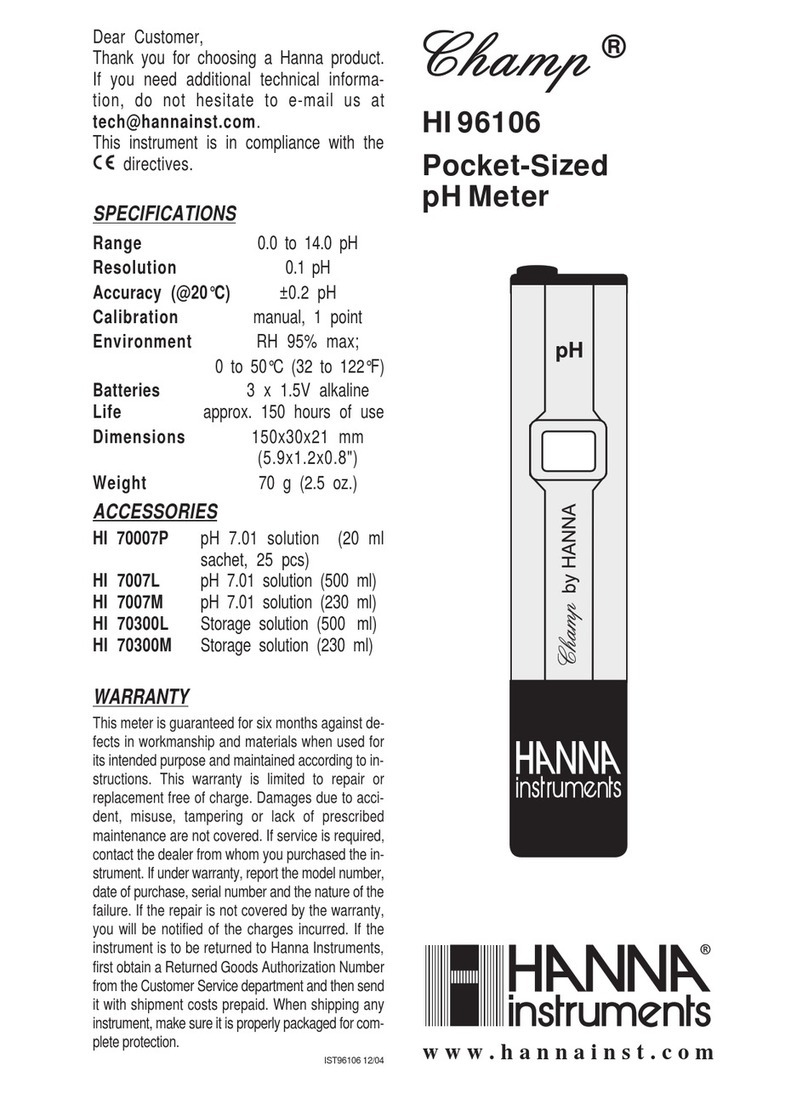
Hanna Instruments
Hanna Instruments Champ HI 96106 instruction manual
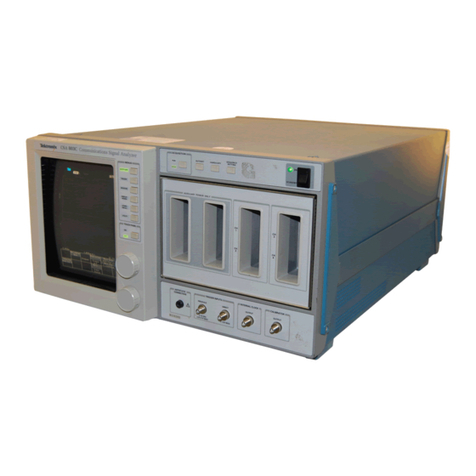
Tektronix
Tektronix CSA 803C Service manual

PASCO
PASCO PS-3515 instruction sheet
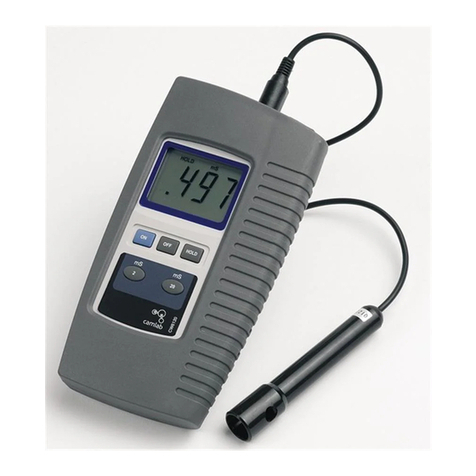
Tintometer
Tintometer Lovibond SensoDirect Con110 instruction manual

COM-power corporation
COM-power corporation LI-220C instruction manual
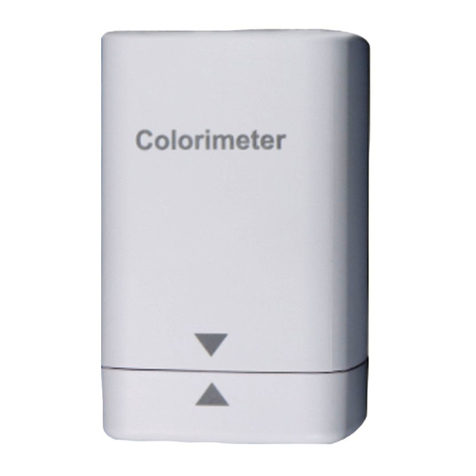
LSHTEC
LSHTEC 86171 user manual

Malmbergs
Malmbergs A3311D instruction manual

York Survey Supply
York Survey Supply 343660 operating instructions
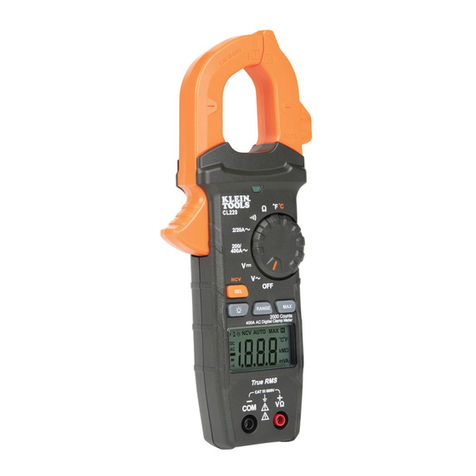
Klein Tools
Klein Tools CL220 instruction manual

Martindale Electric
Martindale Electric CM58 instruction manual

Rohde & Schwarz
Rohde & Schwarz HAMEG HM1508-2 manual


